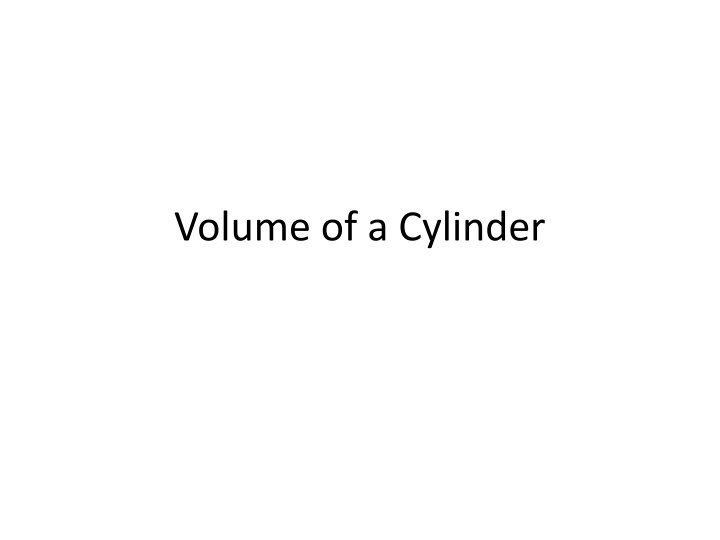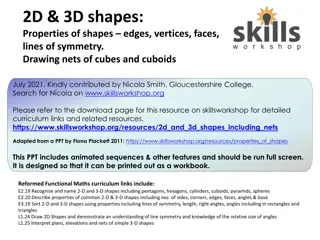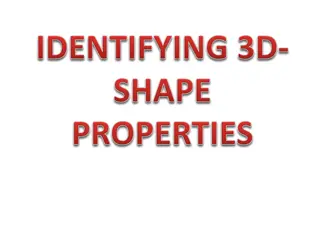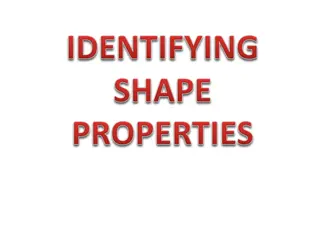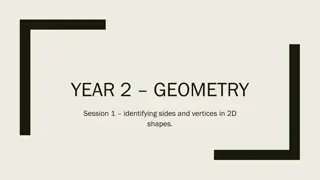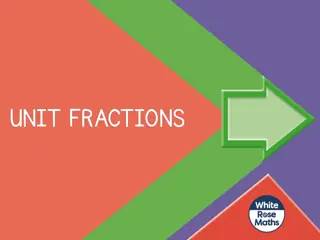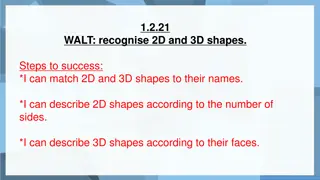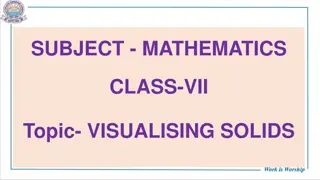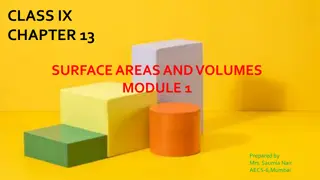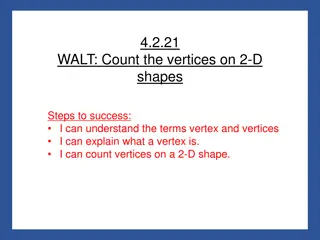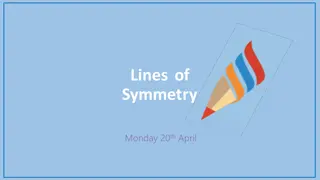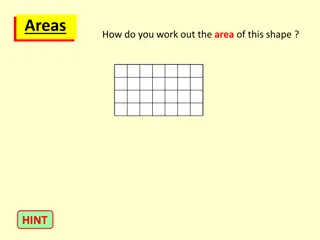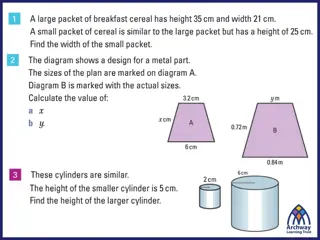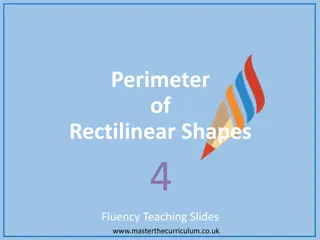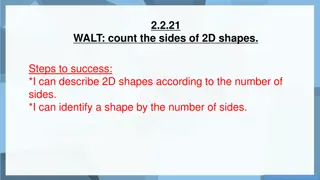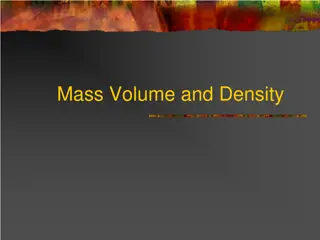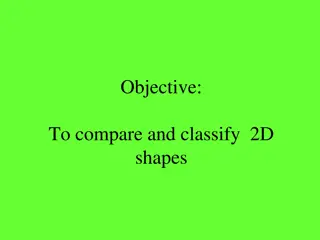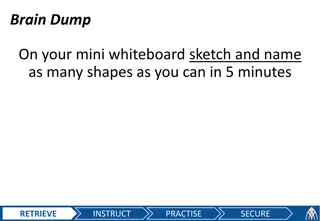Volume of 3D Shapes
Learn about the concept of volume in mathematics, specifically focusing on volumes of cylinders, prisms, and other 3D shapes. Discover how to calculate the volume of different objects and deepen your understanding of units used to measure volume. Explore examples and challenges to enhance your knowledge and problem-solving skills.
Download Presentation

Please find below an Image/Link to download the presentation.
The content on the website is provided AS IS for your information and personal use only. It may not be sold, licensed, or shared on other websites without obtaining consent from the author.If you encounter any issues during the download, it is possible that the publisher has removed the file from their server.
You are allowed to download the files provided on this website for personal or commercial use, subject to the condition that they are used lawfully. All files are the property of their respective owners.
The content on the website is provided AS IS for your information and personal use only. It may not be sold, licensed, or shared on other websites without obtaining consent from the author.
E N D
Presentation Transcript
What is Volume? The volume of a three-dimensional figure is the amount of space within it. Measured in Units Cubed (e.g. cm3)
Volume of a Prism Volume of a Prism is calculated by Volume = Area of cross section x perpendicular height V = Ah V = (4 x 4) x 4 = 64 m3
What is this? It has 2 equal shapes at the base, but it is not a prism as it has rounded sides It is a Cylinder
Volume of a Cylinder How might we find the Volume of a Cylinder?
Example V = Ah
Pieces Missing Find the volume of concrete used to make this pipe Volume of Concrete = Volume of Big Cylinder Volume of Small Cylinder (hole)
HOME WORK Find the Volume of the Solid. To 1 decimal place
Homework/Challenge Challenge Question
Volume of a Cylinder How might we find the Volume of a Cylinder? V = Ah =
Conversion of units 1cm 10mm 1m 100cm 1km 1000m
Conversions of Units 1 cm2 = 10 mm x10 mm =100 mm2 = 100 cm x100 cm = 10 000 cm2 1 m2 = 1000 mm x 1000 mm = 1 000 000 mm2 1 m2 = 100 m x100 m 1 ha = 10 000 m2 1 km2 = 100 ha
What about when cubic units? 1 cm3 = 1cm x 1cm x 1cm = 10 mm 10 mm 10 mm = 1000 mm3 1 m3 = 1m x 1m x 1m = 100 cm 100 cm 100 cm = 1 000 000 cm3
Capacity Volume - The volume of a three-dimensional figure is the amount of space within it. Measured in Units Cubed (e.g. cm3) Volume and capacity are related. Capacity is the amount of material (usually liquid) that a container can hold. Capacity is measured in millilitres, litres and kilolitres.
How does Volume relate to Capacity? 1000 mL = 1 L 1000 L = 1 kL 1 cm3 = 1 mL 1,000cm3 = 1000ml = 1L 1 m3 = 1000 L = 1 kL
Examples Convert 1800 mL to L 1800ml = 1800/1000 = 1.8L 2.3 m3 to L 2.3m3 = 2.3kL 1m3 = 1000L (1kL) = 2300L
Length = 5.53cm Capacity Find the Capacity of this cube Length = 5.53cm V = Ah = (5.53 x 5.53) x 5.53 = 169.11cm3 (1cm3 = 1ml) Capacity = 169.11ml
Example Find the capacity of this rectangular prism. Solution Volume = Ah = (26 x 12) x5 = 312 5 = 1560 cm3 (1cm3 = 1mL) Capacity = 1560 mL or 1.56 L (1000mL = 1L)
What size rainwater tank would be needed to hold the run-off when 40 mm of rain falls on a roof 12 m long and 3.6 m wide? (Answer in litres.)
This powerpoint was kindly donated to www.worldofteaching.com http://www.worldofteaching.com Is home to well over a thousand powerpoints submitted by teachers. This a free site. Please visit and I hope it will help in your teaching
